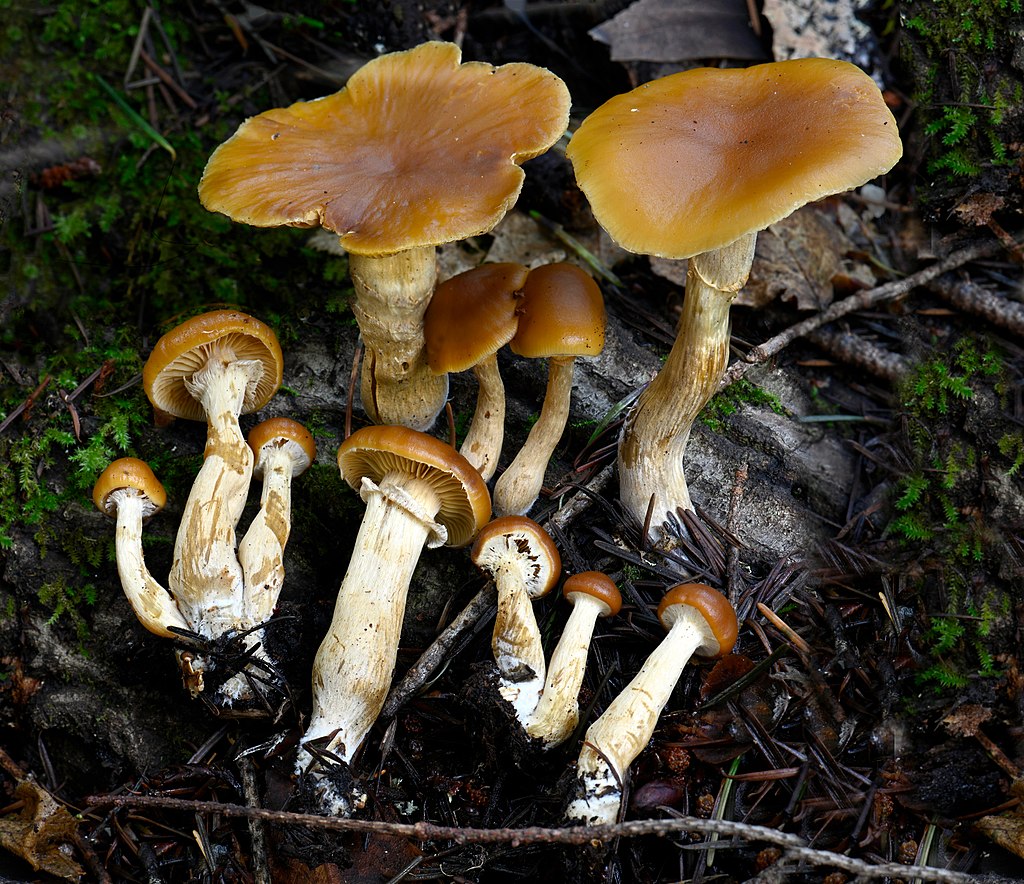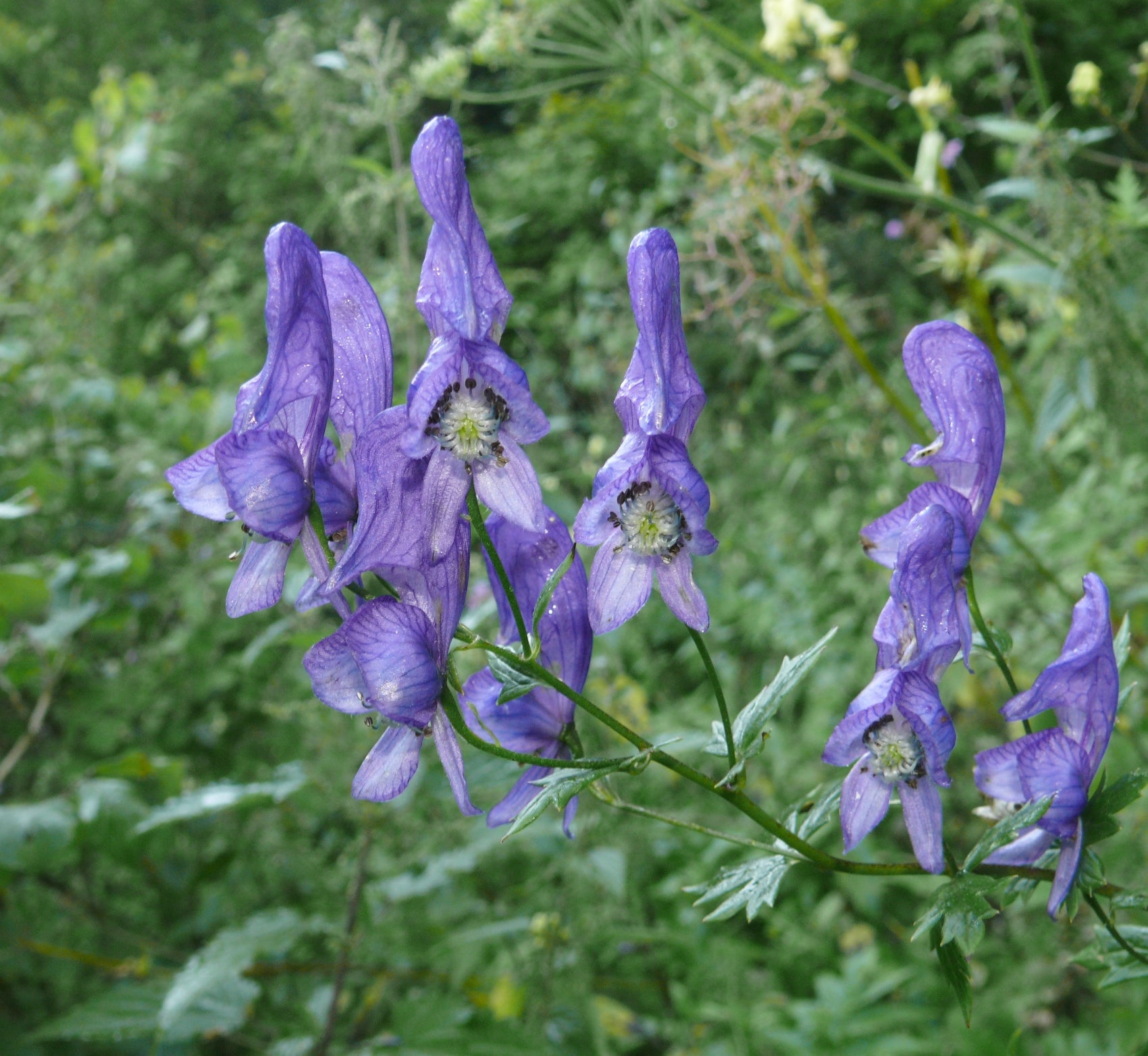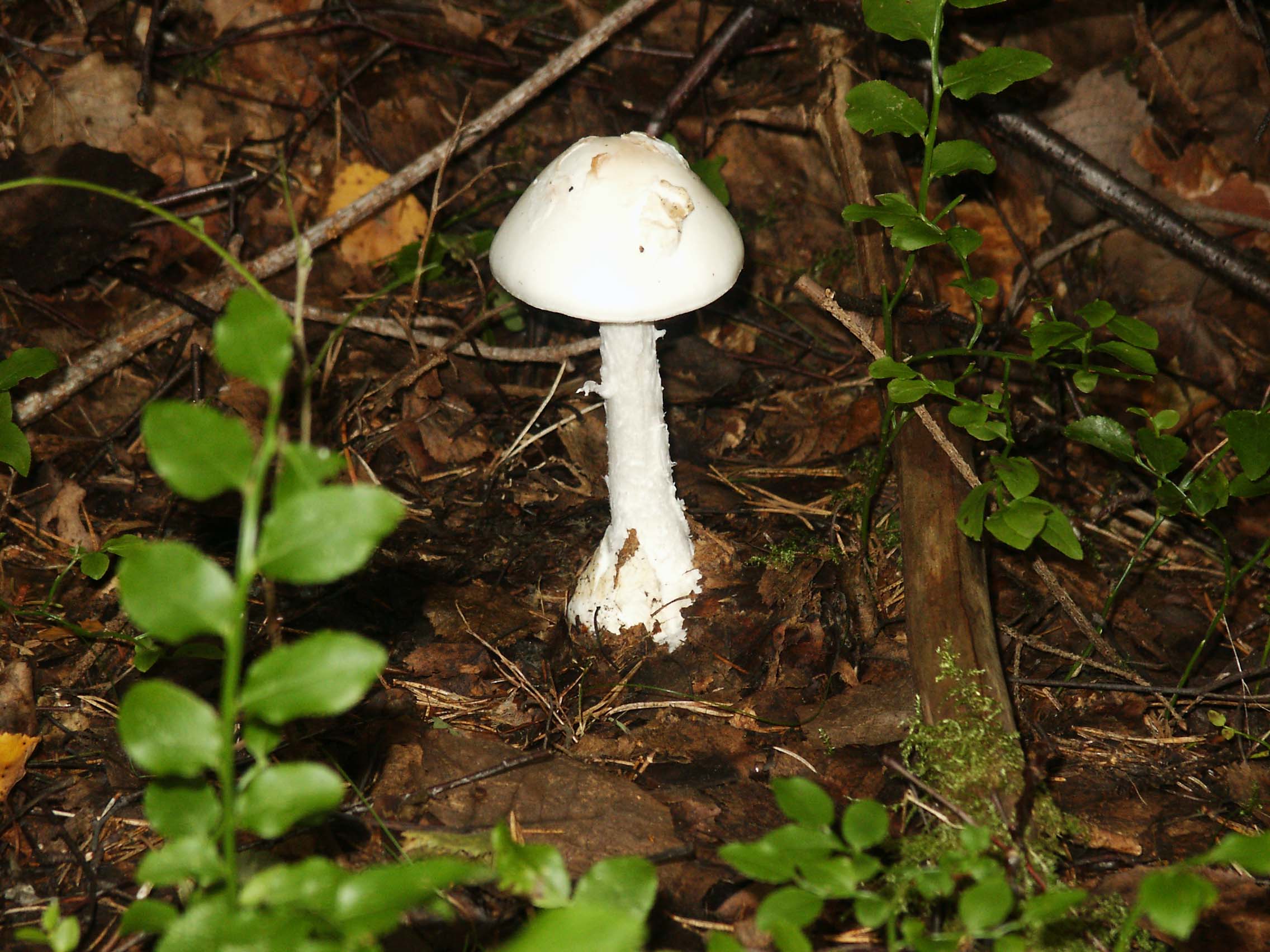
Wild "Poisonous" Plant of The Week 8 - The Funeral Bell Mushroom
Botanical name: Galerina marginata.
Common names: Deadly Skullcap, Funeral Bell

Alan Rockefeller, CC BY-SA 4.0 <https://creativecommons.org/licenses/by-sa/4.0>, via Wikimedia Commons
Seasonality: Summer to Autumn in the UK.
Habitat: Can be found in most types of woodlands but is most commonly associated with coniferous trees. Grows all over the UK but is commonly found on most continents.
Identification: These mushrooms have brown to yellow caps that fade in colour as they age and dry. The gills are also of a brownish colour and will give off a rusty spore print. A well-defined membranous ring is typically seen on the stems but often disappears with age. As the specimen matures, the caps become flatter and stems browner. There is nothing particularly defining about this mushroom's appearance, so is very easy to confuse it with other varieties. This makes it fairly dangerous.

(above - some younger specimens of the fruiting bodies)
Toxicity: Highly! It contains many of the same amatoxins found in the classic "Death Cap" fungus. Ingestion will almost certainly lead to severe liver damage with vomiting, diarrhoea, hypothermia and eventually death if not treated rapidly. There are at least ten deaths attributed to the Funeral Bell over the last century.
Photos courtesy of Alan Rockefeller via Wiki https://creativecommons.org/licenses/by-sa/4.0
This image was created by user Dan Molter (shroomydan) at Mushroom Observer, a source for mycological images.You can contact this user here.English | español | français | italiano | македонски | മലയാളം | português | +/−, CC BY-SA 3.0 <https://creativecommons.org/licenses/by-sa/3.0>, via Wikimedia Commons


